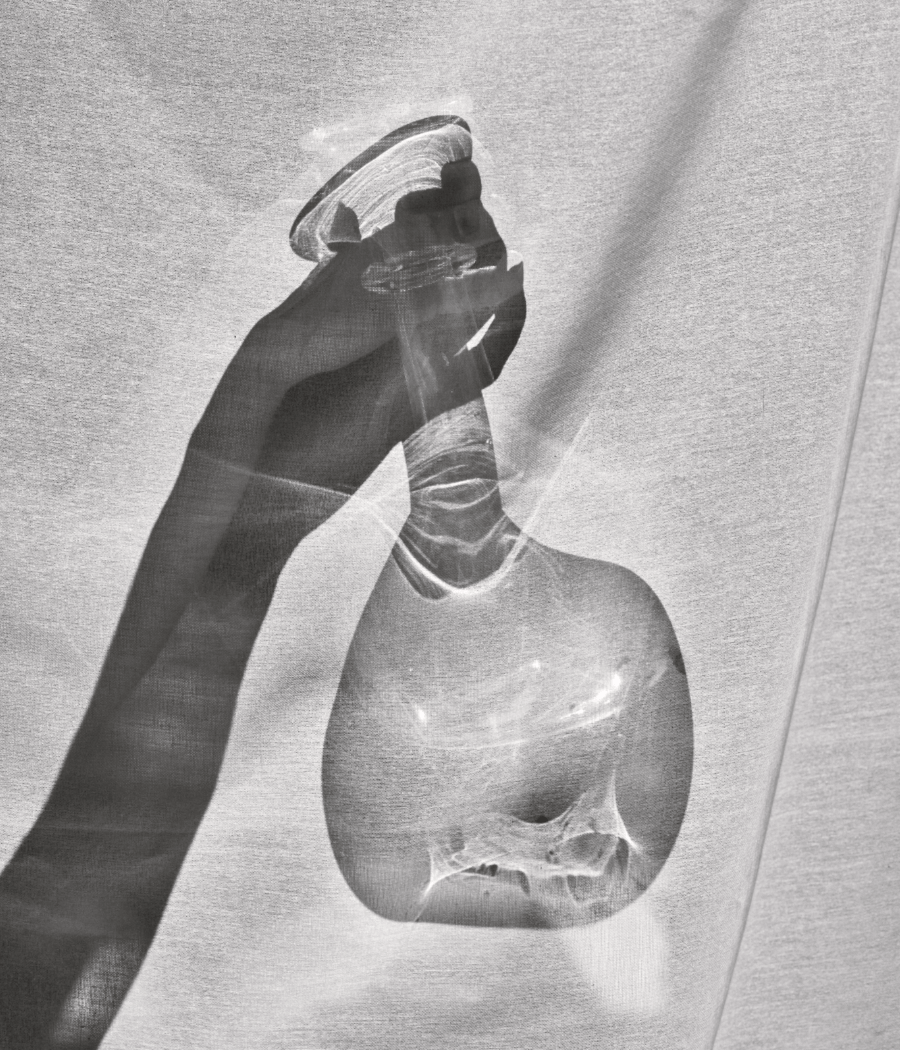How would you describe the food you create? What is the core value represented in the food?
I subscribe to healthy hedonism. I strive to find the balance between eating food I want to eat and eating food my body wants me to eat. If it’s not delicious, I don’t care if it’s healthy. Likewise, there will always be those meals that demand to be eaten with abandon – life needs those, and plenty of them! But after a lifetime of struggling with my weight and two babies later, I’ve also figured out the balancing act of marrying maximum flavor with food that actually makes me feel (and look) good from the inside out.
For the most part, I go heavy on vegetables and plant protein (lentils, beans), plus a bit of high-quality animal protein, and plenty of yogurt (and other naturally fermented foods – I am an avid proponent of how important prebiotics and probiotics are for our overall health and beauty! I’ll save that for another post). I love fruit, but I try to eat it in season and sparingly. I also love carbs and sugar, and anyone who knows me can tell you what a sweet tooth I have. I just try to keep it in moderation and make it count.
I am living for the culinary moment that is happening right now around vegetables as the main event. So many recent restaurant empires are built on how lush and opulent a meal made mostly of vegetables (with meat playing the accompaniment, if at all) can be, piled high with herbs and chiles, nuts and fruit, anointed with olive oil and a generous sprinkling of flaked salt. This, plus a hunk of baguette and soft, salted butter (and wine) makes me the happiest girl around.
You grew up in a health-conscious family. Tell us about the ideology surrounding food in your household. What were day-to-day cooking and meals like?
My dad tended to drive a lot of our family dinner conversations towards the latest robotic surgeries he was working on, or some cool new Vitamin D therapy being developed, so I learned about those at a young age, but my mom was our family’s cook – and a great one! We didn’t have chips or soda on hand, but I never felt like we were particularly austere in the way we ate. My mom is Irish, Italian and Swedish, so a lot of her style of cooking pulls from that heritage. But she went vegetarian when she was 13 and ended up playing around with Asian, Indian and Middle Eastern influences for inspiration to replace the flavor of meat so many of us rely on. She never shies away from more cheese, or the right amount of butter or olive oil to make a dish complete. She is all about bright, vibrant flavors. To me, our way of eating growing up was first and foremost about bringing the family together. (There are a lot of us – I’m the oldest of four, and my mom is the oldest of six, so there are always a bunch of us milling around the kitchen at meal times). Family dinner was a keystone of the way I was raised, since it was likely the only time we would get to see my dad, since he was always at the hospital. Health and nutrition was ever present, but it wasn’t the only thing we cared about.
You wrote your first book in college, which is very impressive. Can you speak to what inspired that book at such a young age?
As it turns out, you really can have too much of a good thing. Even though I grew up eating mostly healthy foods, I ate way more than I needed (probably because I was always in the kitchen with my mom, snacking along as we prepared meals for everyone else), and ended up 180 pounds when I graduated from high school. I spent my freshman year of college documenting how I learned to create a healthy lifestyle program that took into account all the new pressures, freedom and responsibility living on your own or just starting a new life can create. I lost 40 pounds over the course of my freshman and sophomore year and shared the effective tips and tricks I developed to lose the weight without ever losing my love of food in my first book, The Dorm Room Diet.
Congratulations on your third book, The Happy Cook! How did this book come about? Can you share a bit about the cookbook process and particularly about developing recipes?
I only ever write books I desperately want to read. I needed The Dorm Room Diet to learn how to make my health a priority but not an obsession and lose the 40 pounds I felt was holding me back from achieving my potential. I wrote my second book, Relish, because I wanted to make sure I was not living a placeholder life in my twenties, waiting for real life to kick in. I wanted to figure out the little things I could be doing a little bit better that would yield big results in my food, my style at home and in my wardrobe, in my relationships and career, and in my time for fun. And I needed The Happy Cook in my life because I was hell-bent on figuring out how to become a DOMESTIC GODDISH. Haha, this is the phrase I’ve been using to describe my kind of time in the kitchen – I don’t want perfection. This is not about being a goddess, with all the stress and pressure that brings. The –ish gives you back the freedom to take yourself less seriously, to see your time in the kitchen as a place to reinvest in you and turn out delicious meals at the same time. That was the whole idea: how can we have fun in the kitchen, feel in control but also free to experiment, turn every meal into an opportunity to celebrate even while keeping the process simple, and take it easy on ourselves! A happy cook is simply a confident one, so I filled this cookbook with the easy, relatively healthy, super-flavorful recipes I rely on all week long that I hope will become second nature for my readers.
“ The Happy Cook” describes you well—you certainly have an ease and playfulness as you cook. What prompts this feeling of joy in the kitchen?
My mother and grandmother are my original happy cooks. They taught me how to cook long before I went to culinary school. Between them, they have 10 kids and could easily have seen putting meals on the table as a chore. Instead, they saw it as a liberation. There was so much experimenting happening around our family meals. I can’t tell you how many afternoons I spent food shopping with my mom, then coming home to whip up a meal we were trying for the first time, or riffing on an old favorite. There was never any stress involved, even on the rare occasion when things didn’t go well. The back up was always a simple, but delicious pasta – we had troughs of homemade marinara in the freezer at all times, or even just garlic, olive oil, chile flake and parmesan in a pinch. The most important thing was the attitude: cooking was about providing for their families, but it was also an expression of these wild, wonderful, powerful women in my life. Being in the kitchen always reminds me of them, which is why I see it as my free space, a place to relax and have fun. The Happy Cook is my effort to capture some of this essence of owning your kitchen as your kingdom with simple, (relatively) healthy meals that feel celebratory any day of the week.
Describe your breast-side-down technique for roasting chicken.
Since the white meat of the chicken cooks faster than dark meat, it has a tendency to dry out before the thighs and legs are finished cooking. To make sure I get equally tender, flavorful, juicy meat throughout my bird, I do the first hour of roasting breast side-down on the rack, and then flip it for the final 45 minutes or so to allow all the juices to redistribute evenly and the skin to crisp to a lovely golden brown. Trust me on this one. Oh, and salt your bird all over at least an hour before you roast (or overnight), and use about double the salt you think you might need – I’ve never had chicken I thought was too salty, and it helps get even crispier skin.
Your date, hazelnut and okra recipe is honestly like crack! Tell us about the flavors and how the recipe came about.
Haha, I’m so glad you think so! That was definitely my reaction the first time it came together, almost by accident. I am a date addict and always have them around – they are rich in fiber, iron and other minerals, and I use them in my smoothies (and my kids’ smoothies) to add natural, caramel sweetness. My father’s family is Turkish, so I also grew up eating dried dates and figs stuffed with nuts as a snack with afternoon tea, or sweet breakfast treat. And I am such a fan of the typically Middle Eastern inclusion of sweet with savory. I love to use currants, raisins, or dried apricots in my savory pilafs, with meats, etc., and dates are such a natural replacement if you have them. As they heat, they melt and become even more luscious. Combining them with scallions for a little onion bite and tender nuts (hazelnuts, pine nuts, walnuts, or slivered almonds all work well) is the most indulgent blend of fat and flavor. You could basically throw that shit on cardboard (or a fiber cracker) and it would taste amazing, but I especially like it over slightly bitter greens or vegetables.
What has been the single biggest influence on your style of cooking?
Less is more. When we launched “The Chew“, I was 24 and probably trying a little (a lot) too hard to prove myself, so my recipes always had 300 ingredients. It became a running joke for me and my co-hosts on the show. Learning from them and tasting how they masterfully combine unexpected flavors to create nuanced, simple dishes you crave changed my cooking game. The real experts tend to use only the essentials, yet somehow their food is layered in just the right way. I am always working to figure out how to use less equipment, fewer ingredients…it has the added benefit of making cooking a lot easier, with infinitely tasty results.
Most important flavor-building ingredient or combo?
Fresh parsley, lemon zest/juice, olive oil and salt. This combo is perfect over fish or chicken, as a quick vinaigrette, tossed into grains, sprinkled over eggs. There is almost nothing (savory) olive oil and salt can’t fix, and I think a little boost of fresh herb and citrus take it to the next level. Throw a smashed clove of garlic and chile flakes in the olive oil to steep if you want an extra boost of flavor.
Describe your path, how you got to where you are today.
The most important thing was realizing that battling with my weight in a family full of health nuts was not the setback I had always seen it as. Instead, it became my advantage. Learning to create a healthy lifestyle program and writing my first book, The Dorm Room Diet, gave me my first real taste of TV exposure on book tour, taught me how to speak in public, and most importantly, allowed me to see how sharing directly and meaningfully from my own experience could shape the success others could have and keep the process fun. This is what daytime TV is all about: giving our viewers useful information they want or need, and making it entertainment.
Landing the co-host job at “The Chew” was a huge break – I was in the right place at the right time, and so much of how anything in media happens is down to luck. But it was also about being prepared with my personal knowledge of health, food and cooking, and hanging around the hoop (to use one of like two sports analogies I actually remember and understand from my high school days). I graduated from the Institute for Integrative Nutrition, and ultimately went back to school to get my culinary degree at The Natural Gourmet Institute. I went on plenty of auditions for all kinds of TV gigs that I was probably so wrong for and of course got turned away. But then the opportunity of a lifetime came around and suddenly it makes sense why you need to go through the practice of all the others to land the dream job. We are six seasons in (insane!), and I’ve gained four dear friends, plus a total education in all things food, life, and fun. I have learned so much from my co-hosts’ collective experience, and I think the most important piece has been uncovering who I am, who I want to be professionally, and how I get there.
Every day, as the cameras are about to start rolling, Clinton Kelly says to all of us, “Have fun. Be yourself.” If I were going to get anything tattooed, it would be something to remind me of this simple, perfect, mantra.
Late-night indulgence?
Pizza and sweet batter of any kind.
What’s always in your fridge?
Hot sauce, yogurt, apples, wine, awesome condiments, and pickles.
Anything you would never eat?
No. But many things I would not try again (like fish eyeballs).
What do you make regularly for your family in a pinch? Your go-to?
Frittatas. They are our go-to lazy meal when trying to use up what is in the fridge, or when we’ve waiting too long and are now too hungry to wait for anything else. They’re so easy to build over a delicious vegetable sauté, and I’ll often add leftover beans, lentils or grains to bulk them up. I make a big, fresh side salad and it is the perfect, effortlessly elegant meal.
How does cooking make you feel in 3 words?
Adventurous. Comfortable. Sex bomb-y.
What’s next? Any fun projects on the horizon?
Lots, and I promise to tell as soon as I can!! ☺ But most of all, trying to learn the best ways to do what I love and carve out more time to be home with my family – the days are always slipping away!
































